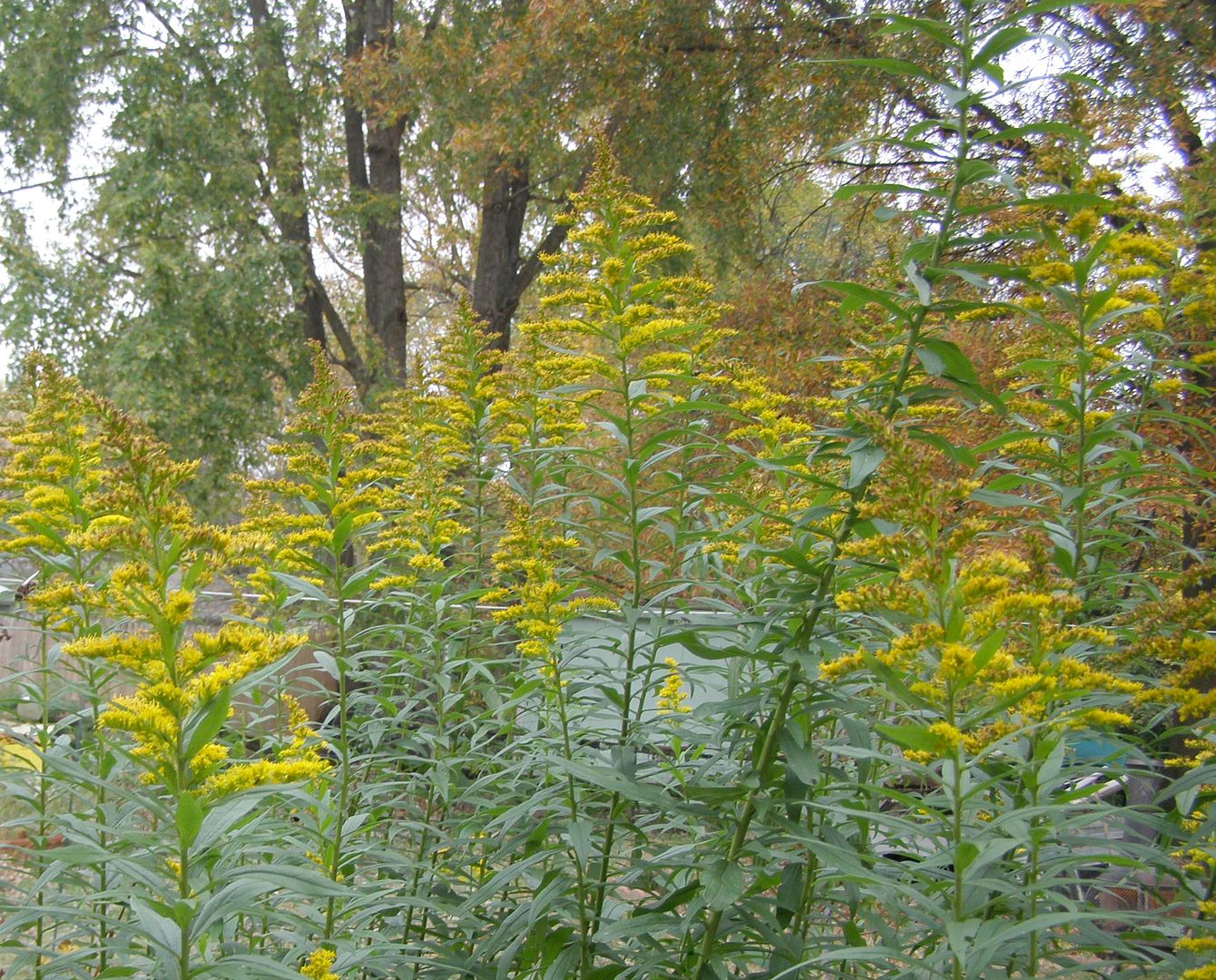
What is very likely Late Goldenrod, Solidago gigantea, has been blooming out in the yard for a few weeks now. Solidago species support the highest number of Lepidoptera species of any perennial, (note that most native trees support a lot more,) and sure enough they have gotten a fair amount of activity.
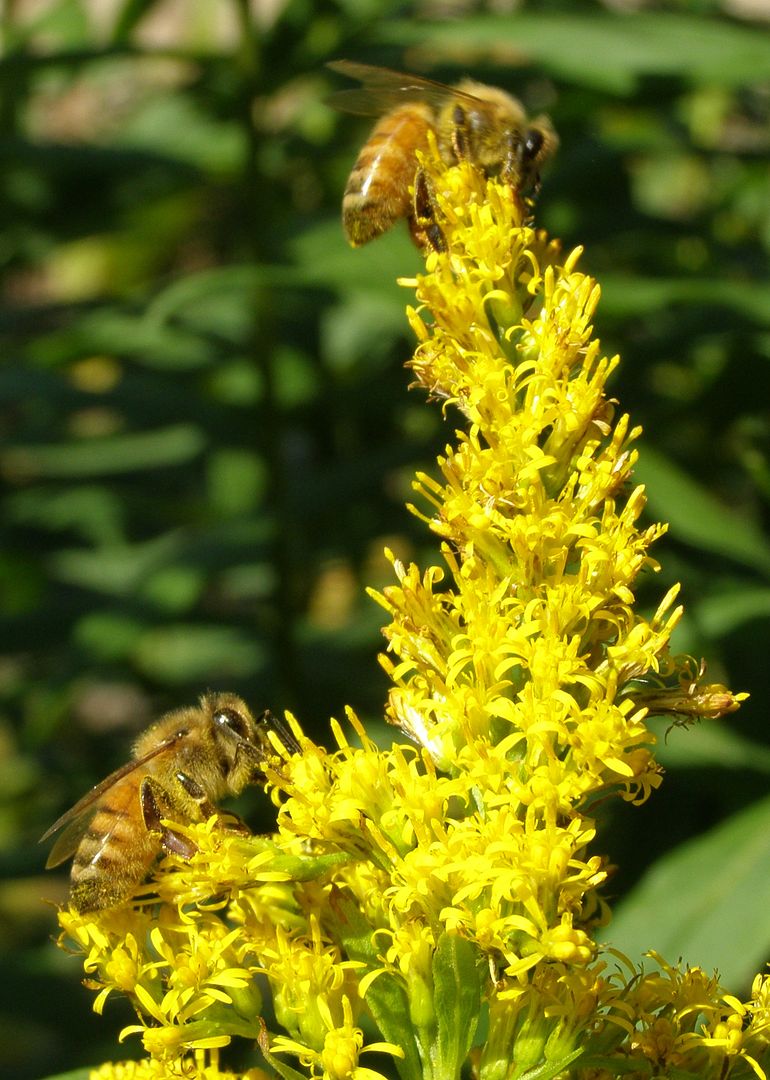
Because it's at the height of flowering in October-November it's just about the only decent source of nectar for pollinating insects. Few Asters last this late in the season.
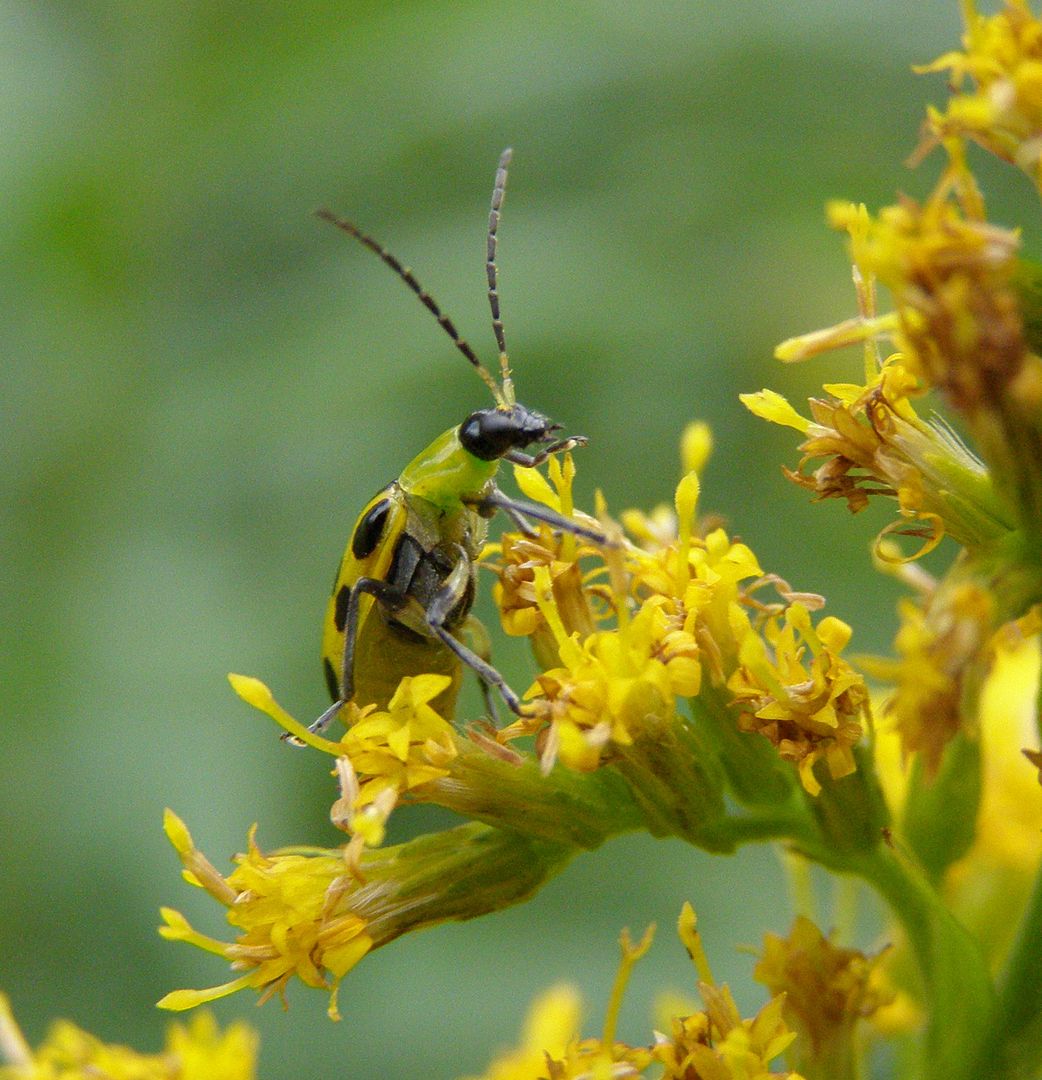
What I believe is Diabrotica undecimpunctata, The Eastern Spotted Cucumber Beetle spent it's time sipping at the flowers, but probably also nibbled some of the leaves. They can be a major pest for assorted field crops (Corn, Cucumber, Potatoes, etc...) but I'm not worried.
For those of you who hate this bug, note that they over winter in the adult stage and killing them is an option. But I have to say making your yard more bird friendly can work even better.
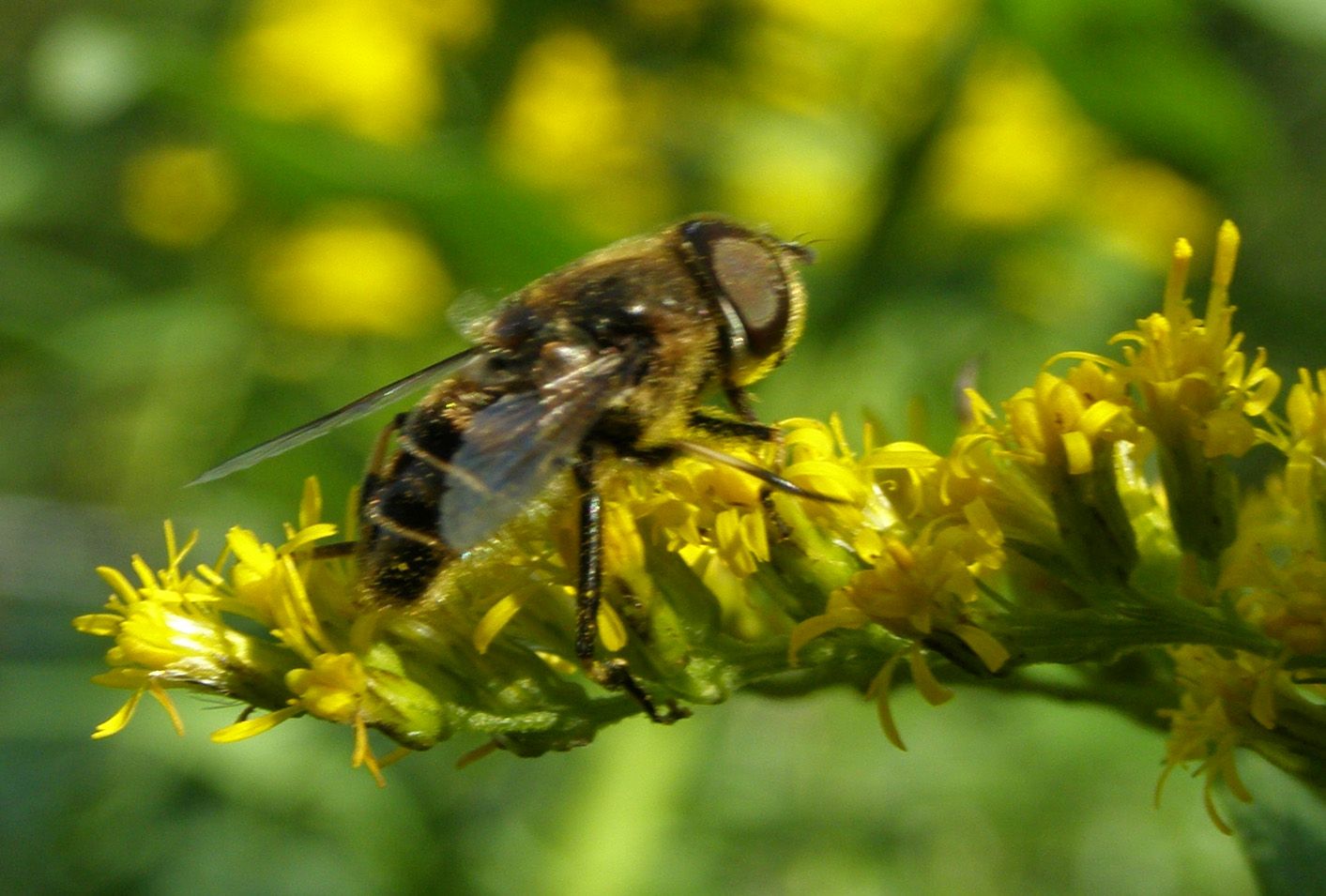
Flower flies mimic bees to avoid being eaten by birds. This one is doing a fairly bad job though but I have seen some that were nearly spot on.

Some of the leaves have been coiled up in to "caterpillar sheds" which protect the caterpillar during the day. These don't last very long though as the caterpillar eventually eats the leaf to an unusable state.

Inside you can sort of make out the caterpillar.
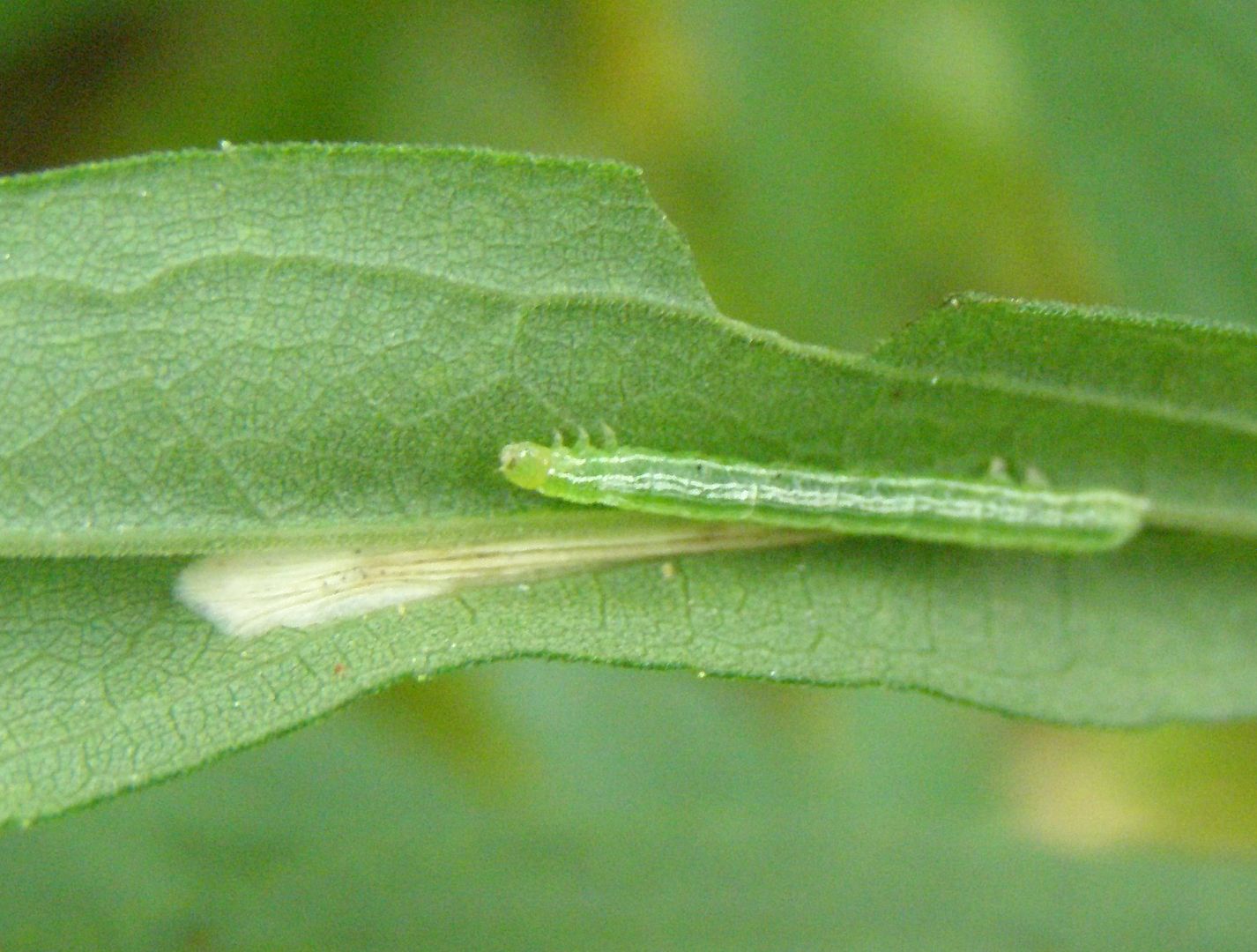
On a nearby plant a different species of caterpillar employs a similar strategy. This one was on the Rudbeckia, (basically a Black Eyed Susan without a common name,) and had the leaf kinked so it was hard to spot from under the leaf. I had to unfold it some for the photo.